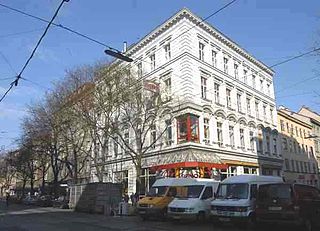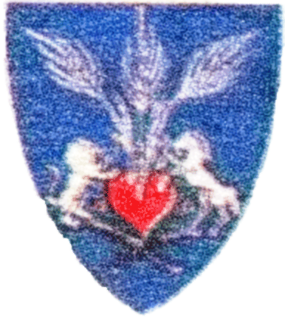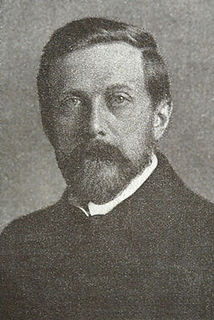
Konstantin Josef Jireček was an Austro-Hungarian Czech historian, politician, diplomat, and Slavist. He was the founder of Bohemian Balkanology and Byzantine studies, and wrote extensively on Bulgarian and Serbian history. Jireček was also a minister in the government of the Principality of Bulgaria for a couple of years.

Count Alfred Józef Potocki was a Polish nobleman (szlachcic), landowner, and a liberal-conservative monarchist Austrian politician and Prime Minister.

Ferdinand Blumentritt was a teacher, secondary school principal in Leitmeritz, lecturer, and author of articles and books in the Philippines and its ethnography. He is well known in the Philippines for his close friendship with the writer and Propagandist José Rizal, and the numerous correspondence between the two provide a vital reference for Rizal historians and scholars, including his last letter from prison before the execution.

Friedrich Moritz Brauer was an Austrian entomologist who was Director of the Naturhistorisches Hofmuseum, Vienna, at the time of his death. He wrote many papers on Diptera and Neuroptera.

Wien Franz-Josefs-Bahnhof is a train station in the Alsergrund district of Vienna, Austria. It serves as the southern terminus of the Emperor Franz Joseph Railway.

Josef Kalousek, was a Czech historian and professor of Czech history at Univerzita Karlova in Prague.

Prince Adalbert of Bavaria was a member of the Bavarian Royal House of Wittelsbach, historian, author and a German Ambassador to Spain.
Wolfgang Gratzer (born 1965 in Bad Vöslau is an Austrian musicologist.

During the 20th century, there were numerous Czech schools in Vienna. These provided the city's large Czech population with instruction in Czech.
Czech print media in Vienna have a long history dating back to the 18th and 19th century, when Vienna had a sizeable Czech population.

Vlasatice, is a village and municipality (obec) in the Brno-Country District of the South Moravian Region of the Czech Republic.

Inzersdorf was before 1938 an independent municipality, and is now a part of the 23rd Viennese district Liesing.
The Czechoslovak Social Democratic Workers Party in the Republic of Austria was a political party in Austria, working amongst the Czech minority. The party was founded on December 7, 1919, as the Vienna branch of the Czechoslovak Social Democratic Workers Party separated itself from the party centre in Prague. The party worked closely together with the Social Democratic Workers Party of Austria (SDAPÖ), and cooperated with the Austrian Social Democrats on all political issues. The party contested parliamentary elections on joint lists together with SDAPÖ.
The Barák Workers Association was a Czech educational organization in Austria during the interbellum years. The association was linked to the Czech National Socialist Party, and was an important pillar of the party in Austria.
Průkopník svobody was a Czech language newspaper published from Vienna, Austria. Průkopník svobody appeared weekly between 1918 and 1926, and bi-weekly 1926-1929. The slogan of the newspaper was Workers of all countries, unite!

Erwin Puchinger was a Viennese painter, illustrator, industrial designer and graphic artist. He was an influential figure in Viennese art in the fin-de-siecle. Puchinger was a part of the Austrian Jugendstil and Gesamtkunstwerk movements, which sought to erase the boundaries between fine art and applied art. Puchinger worked in London, Prague and Paris as well as Vienna and collaborated with other major figures in Viennese art and design such as Ernst and Gustav Klimt and Otto Prutscher. He was a respected art professor at the Graphic Arts Institute, where he taught for more than thirty years.
Jaromír Tauchen is a Czech lawyer, law-historian, certified judiciary interpreter and translator (German/Czech) and lecturer at the Faculty of Law, Masaryk University, Brno. His researches are mainly aimed at German legal history, especially the era of the Third Reich in Germany, in the Protectorate Bohemia and Moravia and history of Germans in the Czech lands.

Julius Mayreder was an Austrian architect.
Andrea Amort is an Austrian dance critic, dance historian, playwright, festival and exhibition curator as well as a non-fiction writer.

Ignaz (Franz) von Mosel was an Austrian court official, composer and music writer.













